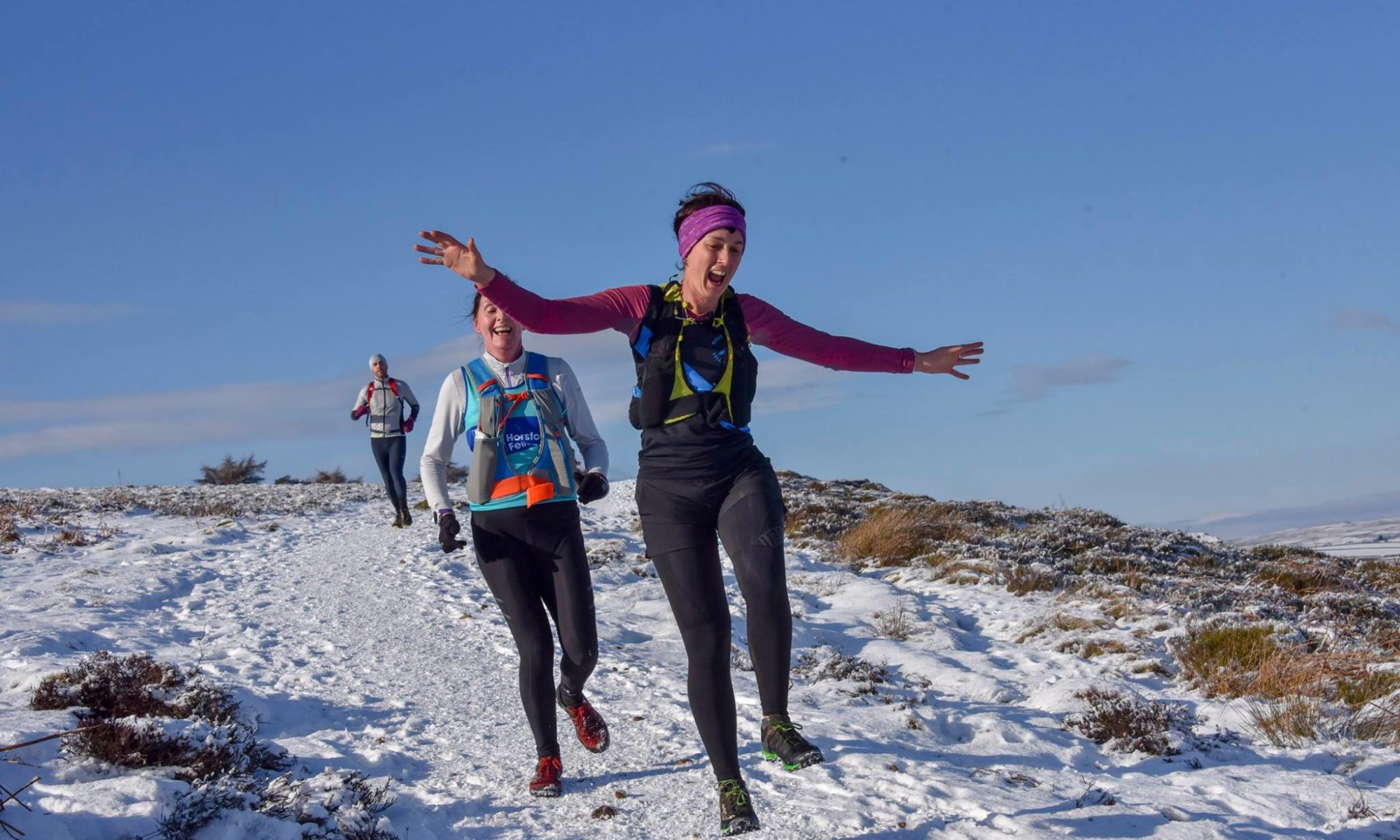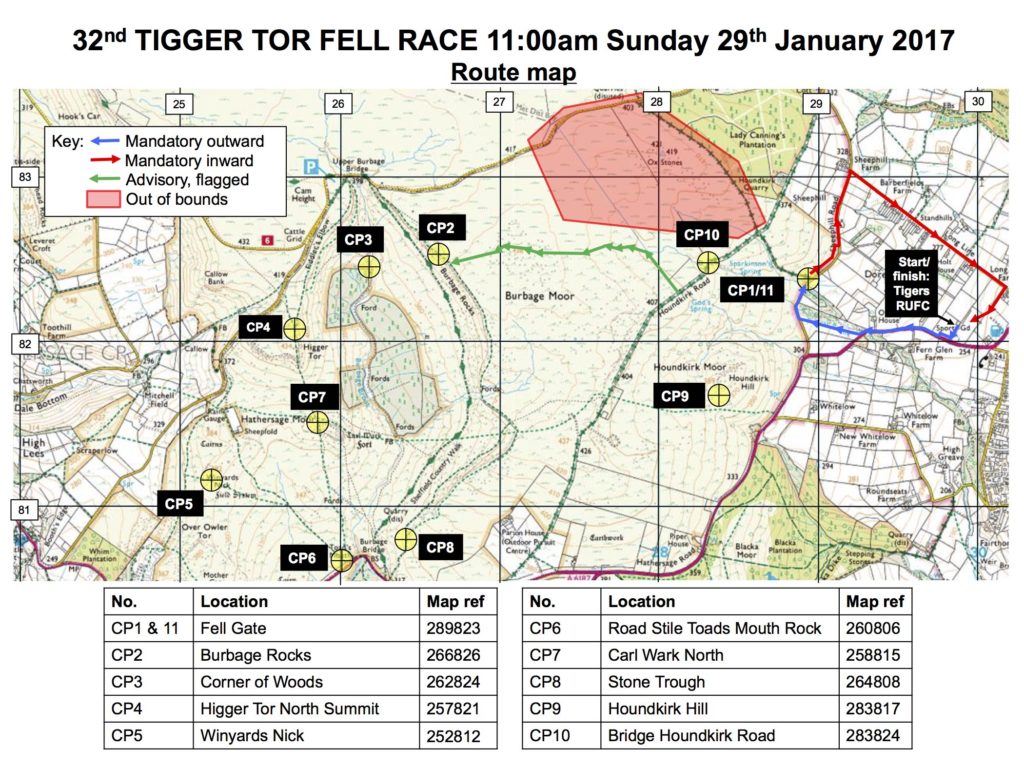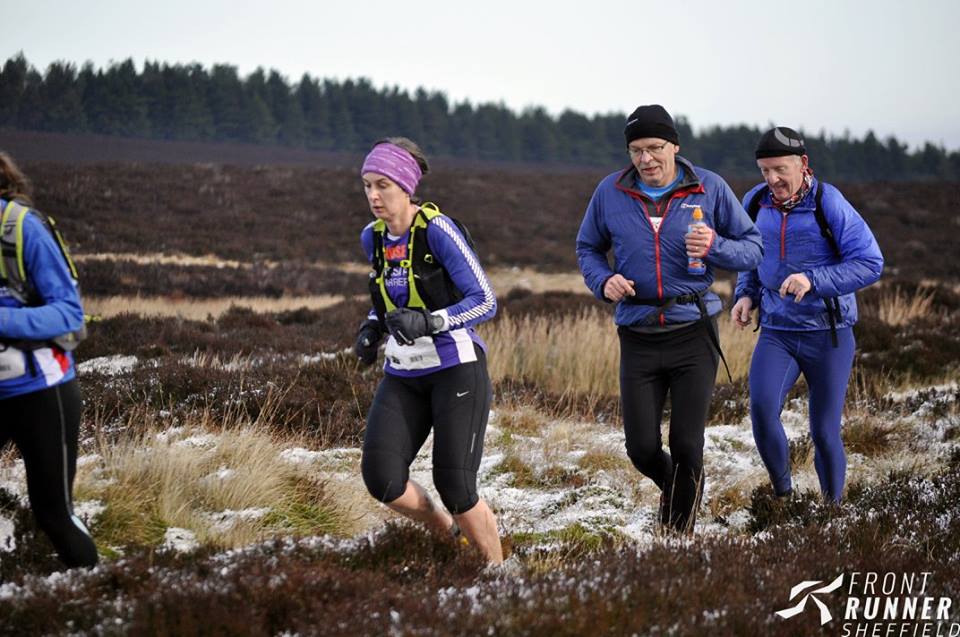I was born, through no fault of my own, in Sunderland. But I moved to Yorkshire after a few months, and I hope I count as a Yorkshirewoman. As such, I’m supposed to have the following characteristics: frankness, tightness, humour and grit. I’m not tight, actually, though my accountant wishes I were. I am frank, because I don’t see that there’s any alternative. Sometimes I’m funny. And I think I have grit. But I’m not swayed by daft positive thinking. I’ve never thought much to life coaching (though therapy is another matter: that’s useful). I do not have mantras displayed anywhere, nor any books with the word “motivate” or “positive” in the title. The nearest I come to that sort of thing is a small book that my friend Molly once sent to me called “Cheerful Thoughts,” which is a series of literary quotes. She knows me well.
So when it came to getting back to the fells after last week’s calamity, I had no mantra, nor talisman, nor good luck charm. All I had, really, was grit and a pair of Mudclaws. Also, FRB had bought me entry to Tigger Tor, a race in the Dark Peak, as a Christmas present, so it would have been rude not to run it. Even so, I hadn’t run or exercised all week. I was still chain-ingesting painkillers until mid-week. My face-against-rock headache didn’t disappear until Wednesday. My leg was cut and sore, and – oddly – my knuckles were the most sore of all, possibly because it looks like I cut my little finger knuckle almost to the bone, and it’s bloody hard to heal a knuckle, when you’re always bending it and opening the wound up again. But I couldn’t not run because of a knuckle.
I was definitely unactive all week. Only on Friday did I feel like my knee could bend painlessly enough to cope with a bike ride, even just a 5 mile commute. I thought about doing parkrun on Saturday but then deliberately didn’t set an alarm to get up in time, and so I didn’t get up in time. Stubbornly, without admitting it, I decided that if I was going to run again, it would only be on the fells, and only for Tigger Tor. FRB had been out for a week too with a heavy cold. So neither of us were particularly fit or in fine fettle, though a massive carbohydrate dinner from my mother (whose house we stayed in on the way down south) helped: veggie toad in the hole followed by bread and butter pudding. At one point, my mother looked up from making a second egg and milk mix (having just made batter), and said, “you do know you’re having a custard followed by a custard?” And to the second egg custard – the bread and butter pudding – we added custard.
Tigger Tor is run by Totley AC. It’s one of Sheffield’s two big clubs (the other is the Steel City Striders), based in south Sheffield near Dore, where the race HQ was. We got there in good time, parked at Dore More Nursery (plants not babies) and made our way to the race HQ in Sheffield Tigers rugby club.
There is no Tor called Tigger. The race goes to Higger Tor and the Sheffield Tigers are the tigger bit. The forecast, which I had checked obsessively all week, had gone from rain to mist to fog. Driving down from south of Wakefield, there had been lovely sunshine, until we reached Sheffield, looked south and saw a bank of dense fog, and the Arts Tower of the university rising out of it like a spooky Gothic castle. Oh, we said. Fog was an important factor, because Tigger Tor is advertised as a race that can require navigation. And you know how good I am at that. I’m this good: in the car on the way to the race, I asked FRB, “when is it that you need to align the compass with lines on a map?” But the race had sold out – for the first time ever – so there would be about 400 people to keep an eye on. I told myself this, anyway, and tried not to notice the thick, navigationally treacherous fog that had settled like a horror film set over the rugby pitch.

Kit. I focused on kit. Totley AC, to their credit, performed the most rigorous kit-check I’ve ever had. I had the basics checked – jacket, trousers, gloves, hat, compass, whistle, map, emergency food – but the woman also checked my jacket had a hood, and took the trousers out of their packet to check they had taped seams. She was strict, and I appreciated it. It was an impressive start. And it only got better, when I realised there were changing rooms. For women! And enough toilets! And showers! At this point I thought I couldn’t be at a fell face – I’m more used to portaloos on Penistone Hill, and the changing room known as My Car’s Back Seat – and must be at a luxury event that cost £100 to enter, not under £10. That wasn’t all. Once I’d changed and made my way into the bar area, there was a log fire. I’m pretty sure this would make Dave Woodhead of Woodentops laugh his Yorkshire buff off. It was welcome though. A sit-down, a warm-through, and a chance to calm my nerves. Except I didn’t. I get race nervous, but this time I was more than nervous. I was scared. I was terrified of falling again.
I tried to deal with this by going outside to warm up. A run, some high kicks, some moving lunges, hip swings, deep squats. Then we gathered in informal pens – in bunches behind signs with our relevant number range on – and prepared to start. Instead a man came out with a microphone. This was another luxury, which meant I could actually hear what a race organiser said. Usually, because I stand where I do in the race field, and because microphones are a rarity, I hear “mmmmmblllgggghhhhhhhhmmmmmblllgggghhhhhhhh GO”. This man announced that someone who had registered had not gone through the pens. They were also seeking number 13. It was impressive race organisation. Then another Totley fellow started to speak. He said something about kit check and then “it didn’t happen in our day, you just turned up and ran.” This got some laughs, some groans. Then he said, “we’ll start you then you’ll hear a shotgun. That’s to let the marshals know we’ve started. We’ve only got two bullets; the other one is if you haven’t got your kit.”
Except then they announced spot prizes. Then some club award. Then there were some Totley club anecdotes. And people were shuffling and getting cold. A couple of minutes of announcements is fine, but nearly ten? Finally though, someone said, “GO,” the shotgun went off, and so did we.
This is the route.
Andrew B, a club mate of FRB’s, was also running and pretty nervous about it, as he wasn’t confident about navigation either. So FRB had sent us both an email with a suggested route, plus suggestions to calculate our speed over 500 metres in different terrains (as 500m descending can pass a lot quicker than 500m uphill on rock). I sat down with the map on Saturday night and worked out ups and downs and directions, and how long I’d take to get between checkpoints. I thought, despite my nerves, that I was as prepared as I could be. Except for not knowing when to use a compass with a map, rather than just finding north on the compass and then the bearing I needed to take. I know how to do that. But so, probably, do toddlers.
We set off out of the rugby club, up a ramp, along a road, then though a stile – where I watched with some surprise as someone took out his inhaler – and up, up and up through a field. After a week off and reduced fitness, this felt like a slog. Then we hit a track, past some marshals who I assumed were there to direct us, and on we went. There was bog and heather, and I regretted wearing knee-length tights the minute I reached the first heather, because it bit. But at this point and for the next nine miles, I didn’t dare look up. I ran the whole race like this:
I only dared look around me on climbs, when I was walking. It was beautiful. The fog cleared, and the weather was stunning:
Despite my preparation, there was a factor I hadn’t accounted for. I knew what the route was on the map. I knew, for example, that between checkpoint 2 and 3 was 500 metres of downhill, and then we would skirt a conifer forest and head west until we reached a footpath, then due south. But I couldn’t fit the landscape with the map that was in my head. Fortunately I didn’t need to navigate. Far from me being isolated, I was in a section of the race field where sometimes there were queues. I got stuck a couple of times behind people who were walking when I’d have run. But that’s fine. Someone posted on the FRA forum that during the race, he’d heard someone shout out on a narrow trod, “Come on lad, it’s a fell race not a walk.” And he said it wasn’t kindly meant. My view on being stuck behind someone slower is that there are two options: 1. Wait, and pass when you can or 2. Ask if you can pass. Frustration is pointless. And that applies to you, old codger who, when I hesitated all of two seconds at a huge boulder because I was deciding whether to sit-jump up or stride, said, “Come on lass.”
Part of the reason I didn’t know where I was is because I wasn’t looking up, which means that forever more FRB will say to me, “you didn’t see the conifer forest? The MASSIVE conifer forest? The MASSIVE conifer forest that we ran right past?” But partly it was because I had no idea which checkpoint was which any more. There was an impressive amount of marshals on the route, but there was no sign when they were checkpoints. No flag, no sign, no checking of numbers. That’s not a criticism, particularly, but it meant it got confusing. When I finally asked a couple of marshals which checkpoint they were, I expected them to say “3.” They said, “5.” At that point I gave up trying to understand where I was and got back to not falling over.
I said earlier that I have no mantras, but on this race I did. It was “Lift. Lift. Lift,” and it was directed to my right leg. I know it sweeps rather than lifts when I’m tired, so I told it what to do. Also, my kneecap has been sore since it hit the rock last week, and it was changing from sore to painful the more I ran. My shoes clipped rocks a couple of times, but I stayed upright. (FRB fell three times, but each time on a soft landing, including one fall that threw him face-first into a puddle.) I knew I was running cautiously. By cautiously, I mean, slower than usual. I’d usually be near Andrew B in the field, and hoping to beat him on the descents, but when I did finally see him at a switchback, he was about ten minutes ahead of me. I was pleased for him, because I knew how nervous he’d been and he was running really well, but I also felt despondent that I was so far behind him. Then I had a word with myself, picked up my toys, and plodded on, past more checkpoints, some of them staffed by cheery cheering marshals, some of them by marshals who noticeably cheered on Totley runners, and gave everyone else a desultory “keep going.” There were Totley runners near me, so the disparity was noticeable, but even so: my club instructs marshals in our races to cheer everyone because that’s how it should be. Swings and roundabouts though: I’m very grateful to the marshal who was handing out sweets at the top of a tough climb. And the marshals at CP9 were splendid: “Come on! Great running! This is your last big climb! This is the last highest point!” If you’ve never run a hard, race through force-sapping bogs, you won’t know how profoundly comforting and energizing this was. But it was. Thanks CP9.
I did get lost.
I had run and walked over moors and boulders. I did two water crossings. I ran through deep peaty sucky bogs that sapped my leg strength, and over snow-covered rocks and through icy puddles. I ran through heather so dense I couldn’t see what was under it and on sheep trods so narrow, the sheep would have been breathing in. And I chose to get lost on a wide, clear track half a mile from the finish.
It was at Checkpoint 11. Or maybe it was CP10. I still don’t know which were marshals and which were checkpoints. We turned at a bridge, and ran down the track. It was rocky, and of course I was looking at the ground. This was the danger zone, when I was really tired, and all it takes is one small stone. So I concentrated fiercely on my “line,” enough to not notice everyone else turning off. There was a woman running 100 metres behind me who didn’t call me back, nor did the marshals. I carried straight on for another 300 metres or so until I realised I was on my own. An elderly man was approaching with dogs, and I asked him if he’d seen runners. “No, only walkers.” So then I said, with a brusqueness that arose from sudden panic, “WHERE AM I?” and got my map out for the first time in the race (except when it fell out a few hundred metres in and was skilfully drop-kicked back to me by a runner behind me), and tried to understand, but the panic made me stupid. Sorry, dog-walker, I was far too ungrateful, and you tried hard to help me. I set off back to the bridge, running into another walking group. One man said, “do you want the race route?” perhaps because I had a large number 63 stuck to my chest, and directed me to a nearby right turn, saying it would join the route further down. Later, FRB told me that that was the way he’d come up. I hadn’t even realised we’d come up that way. That explains why no-one called me back: in fell races you can choose any route between checkpoints, and they assumed I’d chosen that one. It was a quicker route down, actually, but I still lost half a dozen places. I tried to make up for it by mustering some speed. Then we got to a road, and to a woman who, in my fatigue, I thought was wearing a pink pussy hat (it was just a pink hat) then a right-turn, then a long descent on road which I did at 7.30 minutes per mile. I don’t like road running, but I quite liked running on that road just for the reminder that my legs can shift and I can overtake, sometimes. Then, a sharp turn right, a stretch of track, a steep incline that I walked up, then the blessed sight of the rugby posts, and the lovely word FINISH.
I made it, in one piece. And though it was a muted performance, I’m proud I got back out there only a week after two significant falls. Luckily I’ve nothing much planned for the next couple of weeks, unless you count running 22 miles around the moors for Rombald’s Stride next Saturday.
This is my “my face is in one piece” face.






